Idanha-a-velha is a sleepy village near Castelo Branco in Portugal. As it is so small, you might think it is not worth visiting, but you’d be wrong there! It’s actually one of 12 historical villages in the Beira region of Portugal. As it is relatively undiscovered or ‘off the beaten track’ so to speak, you will be able to enjoy Roman architecture and a medieval chapel with few or even no other tourists. See this place before it becomes more well known!
Templeseeker is a participant in the Amazon Services LLC Associates Program, an affiliate advertising program designed to provide a means for us to earn fees by linking to Amazon.com and affiliated sites. Other affiliate links may be used in this article on Idanha-a-Velha, but they do not impact on the price that you pay and they do help me to get this information to you for free. Read my privacy policy for more information regarding affiliates.
When to Visit Idanha-a-Velha
Being quite far from the coast and in the Beira region, Idanha-a-Velha gets quite hot in the summer months. I would avoid July and August if at all possible. In July it hosts the BOOM festival which you will want to avoid (unless you want to attend the festival itself!) During BOOM times, the roads may be closed off and if you do manage to get to Idanha-a-Velha while the festival is on, expect to see a lot of hippies!
If you do visit in July or August take plenty of sun cream and water as temperatures can easily reach 35-40 degrees Celsius. Avoid visiting in the winter months of December and January when it is poor weather – colder and less scenic.
The ideal time to visit Idanha-a-Velha is May or June – I was there in July and it was already a bit too hot for me to do the walking. However, it is quite flat and not hilly (like Guarda or Monsanto) so in general, the walking is ok – just avoid the heat of the day. 9-11am is the perfect time to visit.
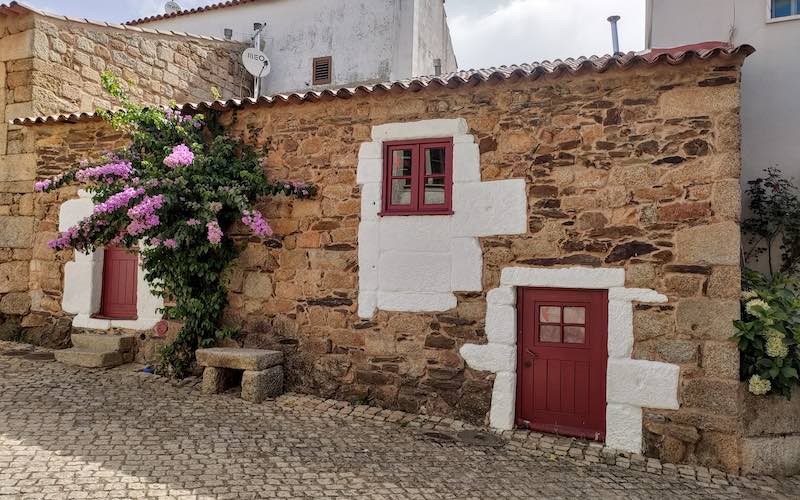
How to get to Idanha-a-Velha
I travelled to Idanha-a-Velha from Castelo Branco by car and it is easily doable as a day trip. You need to spend around 2-3 hours there and it’s enough to see everything and enjoy the relaxing atmosphere. Many people combine Idanha-a-Velha with a trip to Monsanto – the mountain village that was made famous by Game of Thrones and also the village known as ‘the most Portuguese village in Portugal!’
Don’t expect to be able to get a train or bus to Idanha-a-Velha – it really is in the middle of nowhere! Also don’t get it mixed up with another nearby Portuguese village Idanha-a-Nova – this is a different place altogether! I headed to Idanha-a-Velha with Francisco from Beira Tours to check it out….
Porta Norte e Muralhas North Gate and Wall
During Late Antiquity, a wall was constructed around the city which reduced its surface area and left houses and public buildings on the outside. Access was gained through the monumental North Gate, which was flanked by high towers.
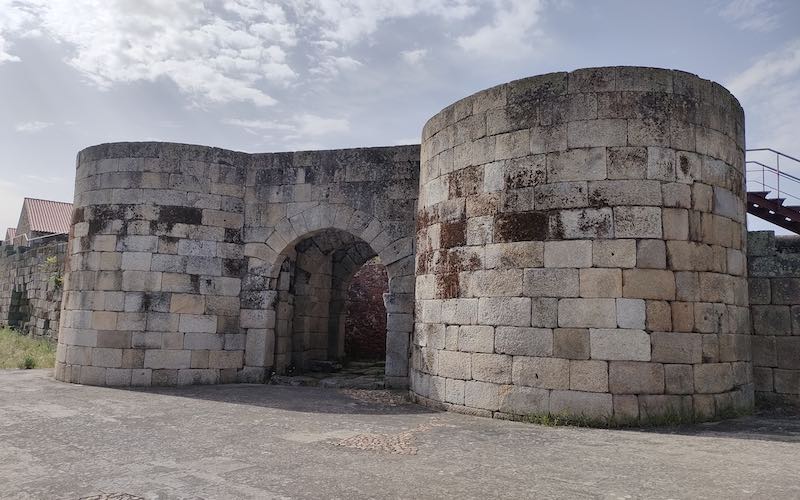
Opposite the gate, the road linking Caceres to Braga forked out, skirting the wall to reach the bridge over the Ponsul river. To the south-west, a postern defended by a rectangular tower gave access to pedestrians. Reclaimed building materials such as columns and signs were also used to construct the sturdy wall. Towers placed along the walls made them easier to defend. Unfortunately, their uppermost parts are missing and some of its sections have been dismantled. Nevertheless, it is one of the best preserved city walls dating from that period in the Iberian peninsula.
Idanha-a-Velha Roman Bridge
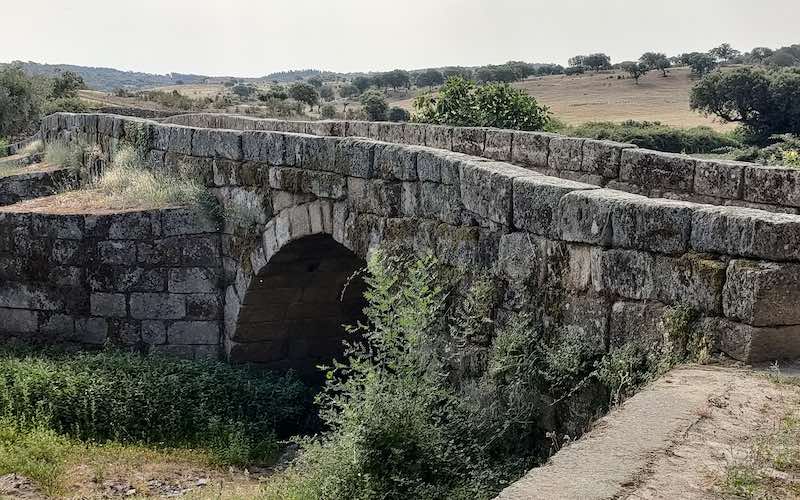
This bridge, whose provenance has been the subject of controversy, is a robust piece of granite masonry with a singular curvilinear form resting on three pillars with triangular-based cutwaters. Emerging between the pillars are what appear to have been four round arches; however, a renovation modified those at the centre into lancet arches. The arched roadway, defined by thick parapets, is paved by pebbles with a central cordon of granite blocks. The repeated rebuilding that it underwent altered its original form nonetheless, one would be hard pressed to date it back to the Roman era that it has traditionally been classified under. Still, its location seems to coincide with the river crossing in that era. The road linking Mérida with Braga, via Caceres and Viseu, reached here. It earned its epithet following the construction of a new bridge west of the settlement in the year 1950.
Oak Tree growing on the City Wall
Among all the notable trees in Idanha-a-Velha, this massive hundred year old holm oak (Quercus rotundifolia Lam.), which clings to the wall’s brickwork, is one of the rare local trees that deserves its own name: Azinheira Grande (Big Holm Oak).
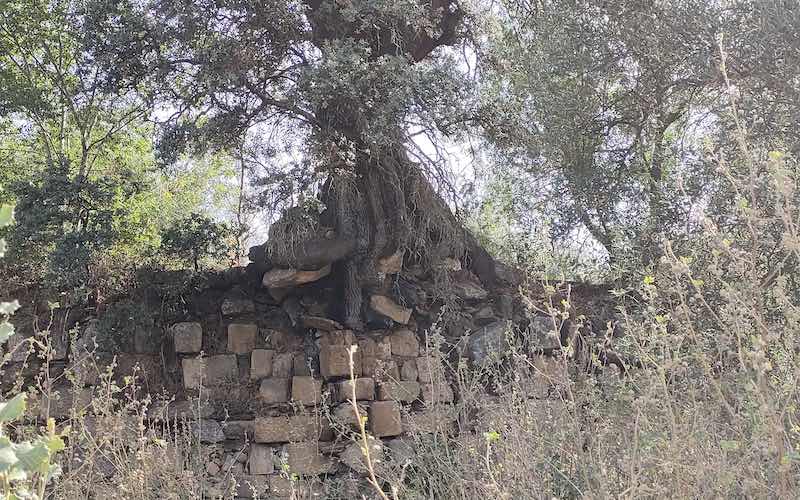
To this day, holm oaks are an important economic resource. Their wood is used for firewood and charcoal, which continues to be used as a source of fuel in the home. In some areas, holm oaks grow in oak groves that are environmentally significant. If this tree is notable for its exceptional longevity and size, an even more famous example is the King Wamba’s Narrow-leaved Ash (Fraxinus angustifolia Vahl) on the north end of the village beyond the municipal limit. Popular imagination associates it with a legend related to the enthronement of that Visigoth king.
Stepping Stones
The use of stepping stones – blocks of stone thrust vertically into the riverbed, allowing one to traverse the current by stepping from block to block to get to the other side – is an archaic method for crossing waterways, one that is perilous and not widely used. For this reason, they are most often used for secondary crossings, as this example illustrates. However, the unusually long line of blocks (stretching nearly 50 m), most of which once formed part of Roman architectural elements, as well as the large quantity of them (43), make these stones especially unique and noteworthy. Unfortunately, the date of their construction is unknown. Nonetheless, this river crossing appears to be very ancient. Although it cannot be identified as a Roman passageway, it is almost certain that during the Medieval era and in subsequent eras, it was part of a series of westward routes, particularly to Idanha-a-Nova and Castelo Branco.
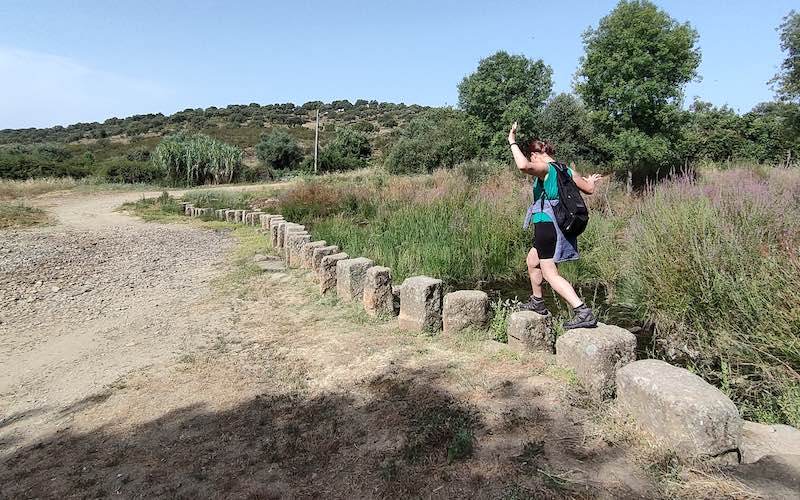
The Ponsul Gate or South Gate
This portion of the wall and gate was rebuilt in the late 1960s when a Roman gate named the Ponsul Gate or South Gate was thought to have existed. However, subsequent archaeological excavations showed that the gate did not exist in the later Roman era. What did exist earlier was a postern that provided exclusive access to pedestrians. A walkway led from this point to the river, where it was covered in stepping stones made from used Roman ashlars. A little further ahead on the other side was a pool called the Arch Fountain or King’s Fountain that supplied the settlement with drinking water in the 17th and 18th centuries. It was built from granite masonry and features a round-arched doorway containing a shield with the royal arms, currently in a highly degraded state.
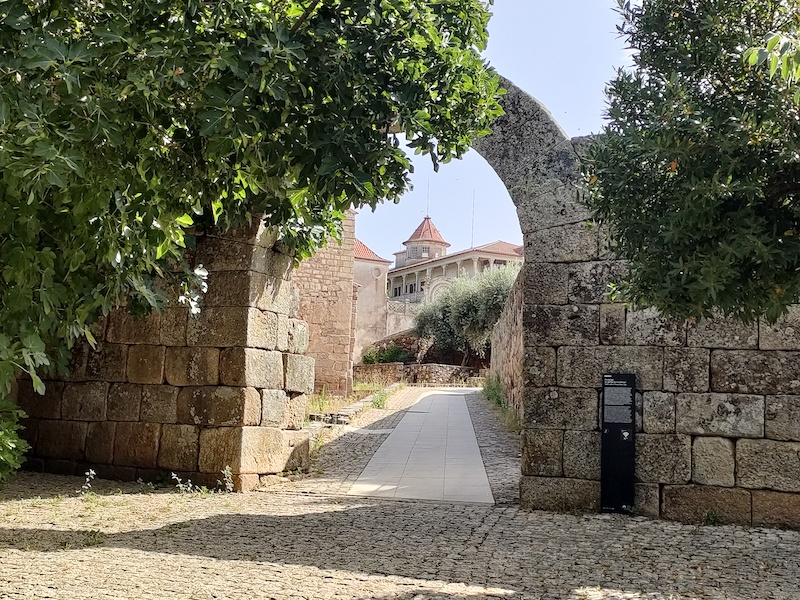
Casa de Romana de Atrio (Roman house with Atrium)
A modern concrete structure protects a tiny remnant of a Roman residence that was excavated during the construction of the Epigraphic Archive. These are the ruins of an urban residence (domus) that once belonged to a rich family with a high social status. The house was built at the end of the 1st century AD and met its demise with the construction of a wall.
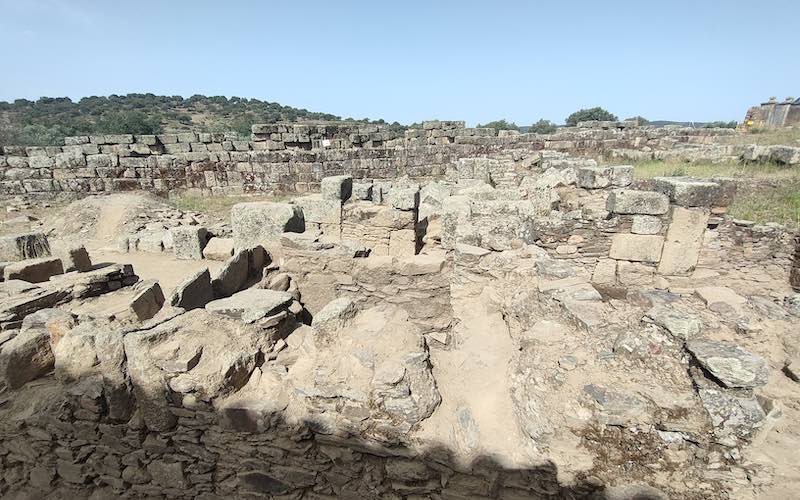
The fragment seen here is part of the atrium (atrium), a covered patio flanked by two compartments (alae) that were separated by a corridor. The atrium features an opening in the roof (compluvium) that allows light to enter and collects rainwater in a basin (impluvium). Columns in the corners provide support for the ceiling’s frame. In this type of residence, the atrium was the focus of domestic life and a place for receiving visitors, particularly when it came to business relationships between the owner of the house and his clients.
Igreja da Santa Maria – St Mary’s Church
Under the rule of the Sueves and the Visigoths, Idanha-a-Velha, then called Egitania, was an Episcopal see. With the notable exception of baptisteries, remains dating from that era are scarce. St Mary’s church, which was previously the see and later the cemetery, is now a building that has been successively restored since the 20th-century. Its present appearance and shape are mainly the result of medieval and 16th-century interventions.
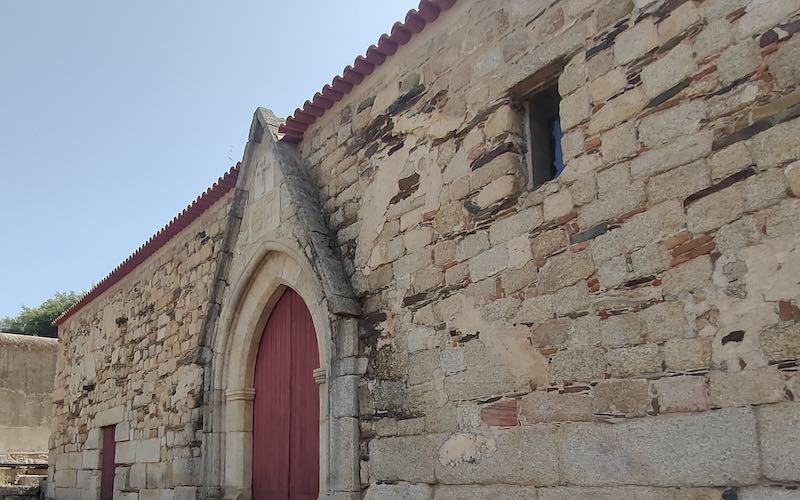
However, the plan and interior architecture reveal a greater, more ancient and enigmatic origin. Theoretical explanations for this are surrounded by controversy: some authors argue that it was a Visigothic see while others see it as a Mozarabic temple and still others suggest that it originally served a secular purpose. Despite these uncertainties, there can be no doubt that it is one of the most striking pre-Romanesque monuments in Portugal.
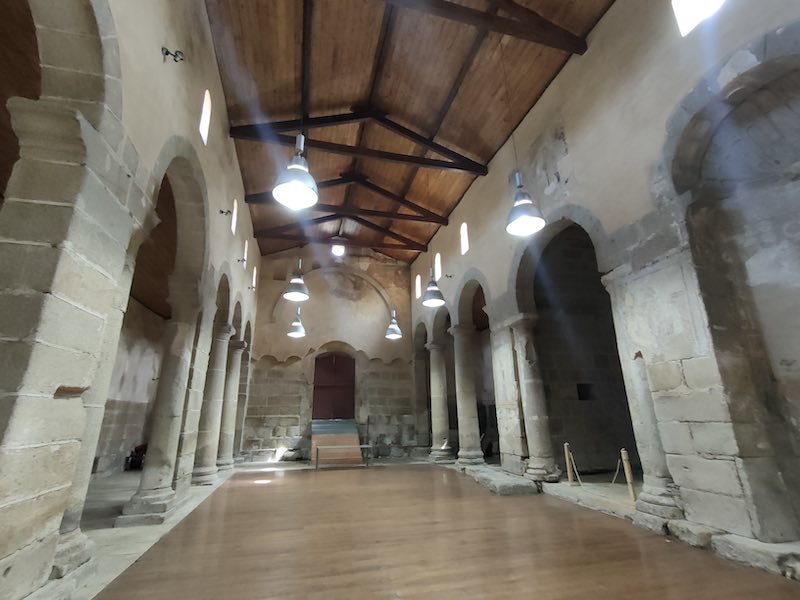
Located between the church and the wall that encloses the settlement are the ruins of important buildings that were uncovered during the archaeological excavations that took place from the mid-1950s to the early 1970s. The archaeologists who led the excavations believed these structures belonged to a bishop’s castle that was built during the time of the Sueves and the Visigoths. This interpretation is controversial, however, since a number of scholars have suggested that the building that gave rise to St. Mary’s Church, popularly known as Sé (Cathedral), came from secular origins and could have been part of the episcopal palace. Still others have observed in the ruins signs of temples that were integrated into the episcopal complex. In the Lower Middle Ages, buildings were found covered over by earth; this space was once a cemetery associated with St. Mary’s Church.
Olive Oil Press
This elongated structure is an old oil press dating back to the 19th century, which was an older one. It is commonly known as a beam press. That is, it is named after the technology used to mechanically extract the oil: a beam is a tree trunk affixed to a wall; it hangs suspended over the fruit, which is appropriately prepared and ground through the pressure exerted by the manual rotation of a vertical bolt attached at the free end of the beam.
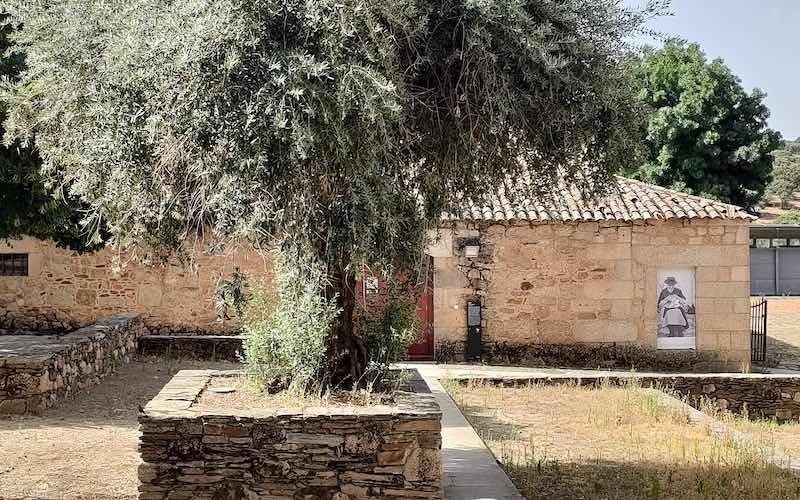
The spatial organisation went according to the process of production, separated by specific locales: the milling room surrounded by granaries; the pressing room and the decantation chambers, where the oil, being lighter, was separated from the vegetable water; and the bagasse room, where the residual material after pressing was kept. A building next door serves as a shelter for pressers and draft animals. Following a major preservation and restoration campaign, it is now used by the museum’s support services and the tourist office.
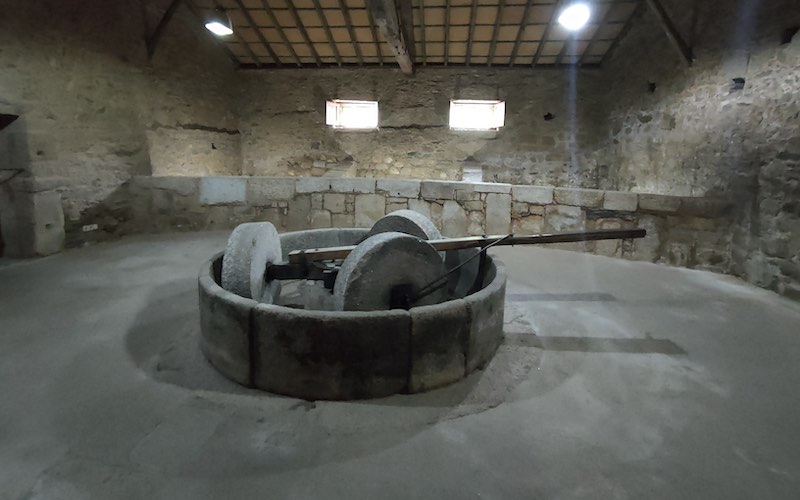
Travel tip – If St Mary’s Church is closed and you want to have a look inside, pop into the Olive Oil Press and ask the man inside to open the church and let you have a look – he has the key! You can say ‘Eu posso visitar a igreja?’
Pillory Post
The pillory post is in a beautiful square with another gorgeous Church next to it. The stunning setting, though, gives an insight into a more sordid past – pillory posts were most likely to be used for punishments and public humiliation.
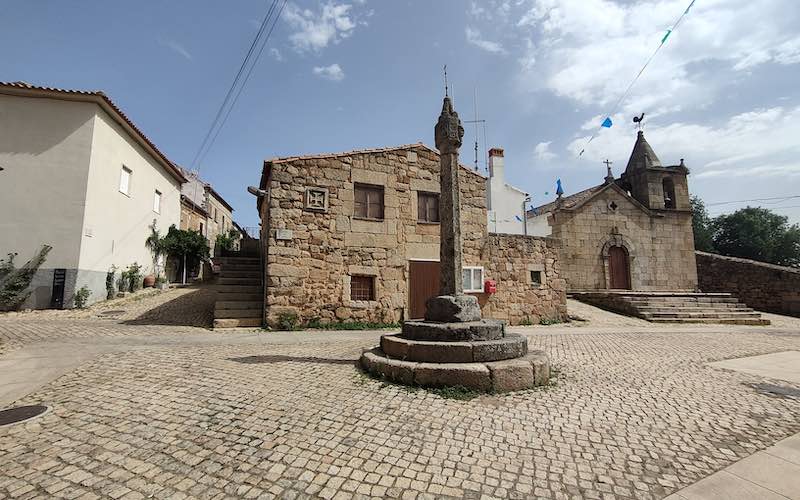
The Story of King Bamber
Finally, before you leave Idanha a Velha, read about the story of King Bamber at the cafe outside the North Gate…
It had been preordained that the first king was to be called Bamba and two men set out into the world to find a man with that name. They came to Idanha-a-Velha, which is said to be the oldest settlement there has been, even older than the hills, where they saw a man ploughing near the bridge. A woman approached the wall and cried out to the man: – Bamba, come and have your dinner!
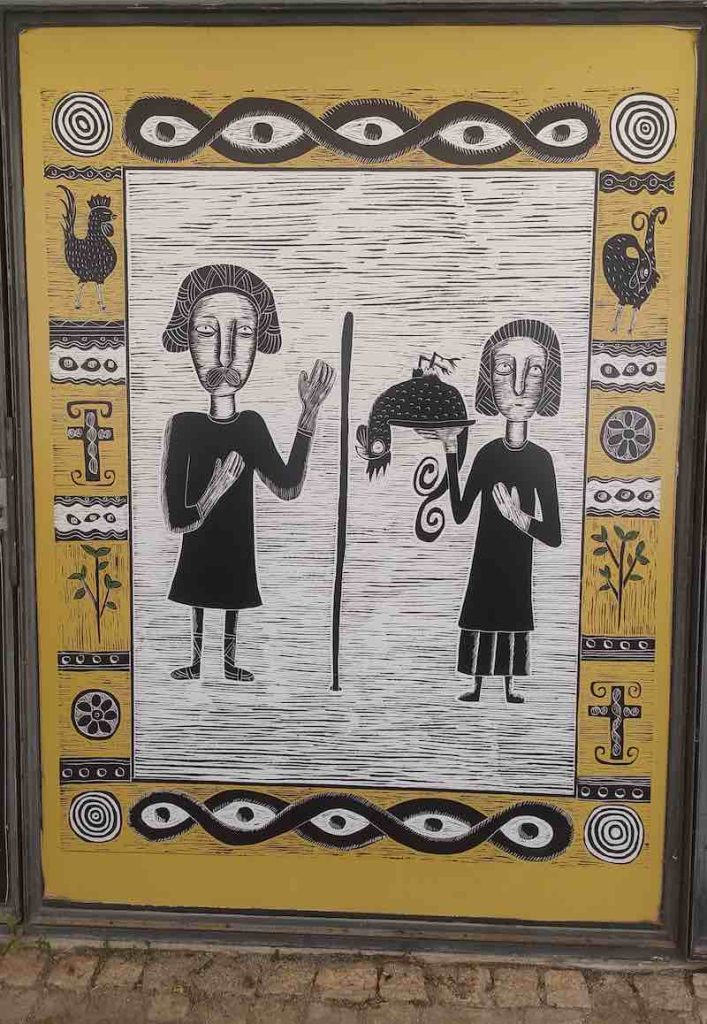
Bring it out here, we’ll eat it near the cows.
The men then said to one another:
That’s Bamba, we have to get to him… They kept a close eye on the woman, following her to Bamba.
When they arrived, the woman put dinner on the table. As it was Feast day, the woman had a rooster for dinner. Do you want to eat out here Bamba?
Let’s eat right here.” The two men said:
-You, Sir, are now the king of Portugal and your wife is now the queen of Portugal.
In response, the man stuck his staff in the ground and declared: – Only when this staff starts to grow shall I be the king of
Portugal. – And only when this cock crows will I be the queen of
Portugal.” At that moment, a branch began to grow from the staff and the cock began to crow. And even today, the ash tree still
stands by that wall and no one takes wood from it.
(Story collected in Monsanto in the 1950s by Leonor Buescu)
‘Vamba’ (also known as ‘Bamba’ or ‘Wamba’) was king of the Visigoths between 672 and 680. His place in history was assured with a panegyric written by his contemporary the archbishop St. Julian of Toledo – the last capital of this people which originated in present-day Poland, dominated the civil and religious politics of Hispania between the 6th and 7th centuries and of whom the medieval nobility of the reconquest claimed to be the heirs. The tale of the farmer forced to be king because of his name is widespread in Indo-European folklore and there are at least six places in the Iberian Peninsula that claim to have been the original site of the legend of Vamba, including Penamacor and Guimarães, in Portugal. The version taking place in Idanha-a-Velha appears in the Iberian chronicles from the 14th century. What is certain is that an imposing ash still remains there, on the banks of the river Ponsul.
Where to Stay when visiting Idanha-a-Velha
Castelo Branco is an ideal base to stay when exploring these surrounding towns and villages. I stayed at Hotel Imperio de Rei which is in central Castelo Branco and they have information on the front desk to help you book your Idhanha a Velha tour. Hotel Imperio de Rei is basic, but has good internet and a great breakfast included. It cost me just 50€ a night.
Further Reading
If you are exploring Portugal, you might also like to read….
- 4 days in Lisbon
- The ultimate Northern Portugal itinerary
- Guide to solo Travel in Portugal
- Is Aveiro worth visiting?
- Is Porto worth visiting?
- Churches of Lisbon
- Guarda Portugal – The Ultimate Travel Guide
